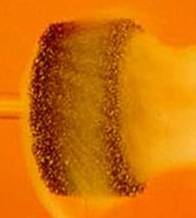Catalysis: Underlying Technologies
In addition to accelerating the chemical reaction, any catalyst must survive the chemical and thermal environment without being degraded. For example, operating a traditional platinum group metal catalyst at elevated temperatures generally results in the catalyst sintering and losing surface area and activity.
Ultramet catalysts and catalyst support combinations can be tailored to meet the requirements of your specific application. The technology underlying Ultramet’s work in catalysis can be grouped into three categories: catalysts, promoters, and catalyst supports.
Catalysts
Although all Ultramet catalysts can be supported on honeycombs, microporous granules, or open-cell foams, many can be used without a support. Because of their chemical composition and low cost, these catalysts can be formed into microporous granules and used directly, which makes them ideal in packed beds and slurries. Ultramet offers the following catalytic materials:
- Precious metals: iridium, platinum, palladium, ruthenium, rhodium
- Super acids: zirconium oxide, titanium oxide, hafnium oxide
- Ultraviolet-activated ceramic: titanium dioxide
- Perovskites: ABO3
- Doped perovskites: A1−xMxB1−yNyO3
- Heteropoly acids: H4[W12SiO40], H3PO4 · 12WO3 · xH2O
Promoters
Promoters are materials that are incorporated into the catalyst system to improve performance. Although not catalytic per se, they nonetheless accelerate the chemical reaction. Frequently, promoters help initiate the reaction while the system is cold or when one reactant is in short supply. For example, cerium oxide, which can store oxygen, is frequently used to provide oxygen storage during the first few seconds of automobile engine operation. In addition to cerium oxide, Ultramet has used other metal oxides for oxygen storage in more severe applications.
Catalyst Supports
Ultramet open-cell foam catalyst supports are made from materials such as silicon carbide, silicon nitride, dendritic rhenium, and metal oxides. The unique structure of the open-cell foam allows the fluid excellent access to the catalytic surface. The foams are compact, provide excellent heat and mass transfer, and generate little pressure drop on the flowing fluid, all of which are distinct advantages over conventional honeycombs.

Gas moving through Ultramet catalyst support, showing excellent mixing and low pressure drop
Because the mass and heat capacity are low, Ultramet foam catalyst supports are well suited for applications in which fast heatup and rapid lightoff are important. Several Ultramet foams are electrically conductive and are appropriate for resistive heating, thus enabling the catalyst to be preheated before use.
Ultramet washcoats can be used to increase the surface area of a foam or honeycomb support. Gamma alumina offers excellent surface area for low temperature applications, and zirconium oxide offers surface area enhancements for higher temperature applications.
